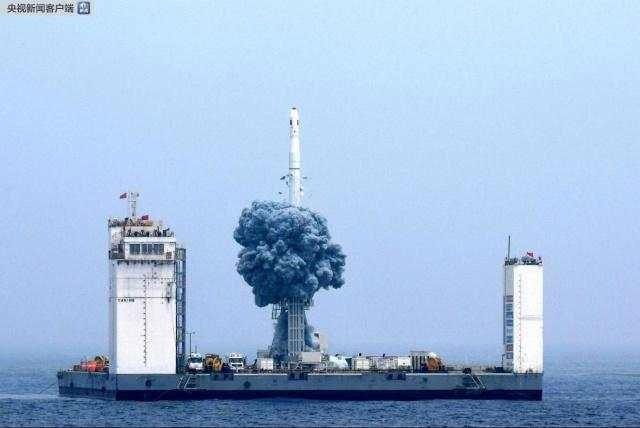
Beijing, China | XINHUA | The China Aerospace Science and Technology Corporation (CASC), the leading force of the country’s space industry, has released a plan for more than 40 space launches for 2021, a new high following the already busy and fruitful 2020.
The construction of China’s space station, the key space mission in the year, will enter a crucial stage, according to the CASC.
The country plans to launch the core module of its manned space station in the first half of 2021. Subsequent space missions include the launches of the Tianzhou-2 cargo craft and the Shenzhou-12 manned craft.
China’s Mars probe Tianwen-1 is designed to complete orbiting, landing and roving this year.
The spacecraft, launched on July 23, 2020, is expected to enter the Mars orbit around February. Afterward, it will spend two to three months surveying potential landing sites to prepare for its landing in May.
China will continue to research manned lunar exploration, and will foster the application of the BeiDou Navigation Satellite System (BDS) in civil aviation and other fields.
2020 has been a fruitful year for China’s aerospace industry. It successfully launched its first Mars mission in July, taking the first step in its planetary exploration of the solar system.
The Chang’e-5 mission has successfully brought home 1,731 grams of moon samples and accomplished several firsts for China, including the first moon sampling, the first liftoff from an extraterrestrial body, and the first rendezvous and docking in lunar orbit, and it was the first spacecraft carrying samples to re-enter the Earth’s atmosphere at high speed.
It marks the successful conclusion of China’s current three-step lunar exploration program of orbiting, landing and returning samples, which began in 2004.
China will establish a constellation of more than 300 low-orbit satellites to provide global communication services, the China Aerospace Science and Technology Corporation (CASC) announced Friday. pic.twitter.com/D4jhqhLVzM
— People’s Daily, China (@PDChina) February 24, 2018
China launched the last BDS satellite in June of 2020 and declared the official commissioning of the BDS in July, marking the formal opening of the newly completed BDS-3 system to global users.
“2020 has been a crucial year for building up China’s strength in aerospace,” said Wu Yansheng, board chairman of the CASC, adding that the annual number of space launches and flight tests hit a new record and the new generation of launch vehicles performed well in major space projects.
China’s new medium-lift carrier rocket Long March-8 made its maiden flight in December of 2020, filling the gap in China’s launch capability to the sun-synchronous orbit from 3 tonnes to 4.5 tonnes, and is of great significance for accelerating the upgrading of launch vehicles.
A new carrier rocket developed by private enterprises for commercial use also performed well. The carrier rocket CERES-1, developed by the Beijing-based high-tech company Galactic Energy, made its maiden flight in November 2020.
“Ensuring the success of major space projects is still the top priority,” Wu said, adding that the CASC will improve the efficiency and design level of space products through advanced methods including digitization.
*****
XINHUA
 The Independent Uganda: You get the Truth we Pay the Price
The Independent Uganda: You get the Truth we Pay the Price



